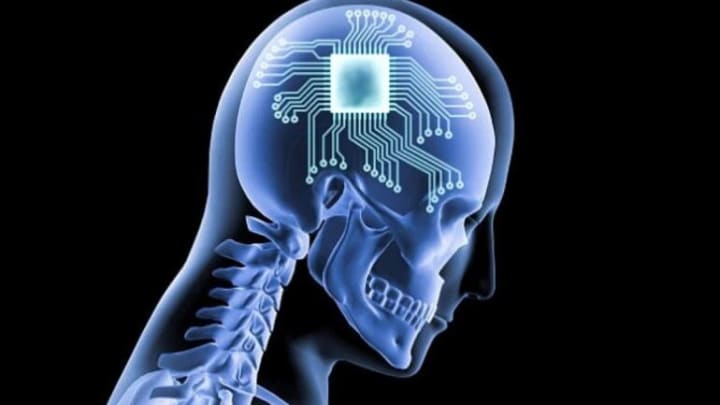Neuralink: The Future of Brain-Machine Interfaces
Exploring the Advancements in Neurotechnology and its Potential Impacts

Introduction
Brief History of Neuralink
Neuralink was founded in 2016 by Elon Musk, with the goal of developing neurotechnology that would allow for the integration of the human brain with computers. The company aims to create devices that can be implanted into the human brain and allow for direct communication between the brain and computers.
Overview of the Company's Focus and Goals
The primary focus of Neuralink is to create a seamless connection between the human brain and computers, allowing for the transfer of information and control between the two. The goal is to create a new type of interface that will allow people to interact with computers and other machines in a more natural and intuitive way. This would have numerous potential applications, including the treatment of neurological disorders, the enhancement of human cognitive abilities, and the creation of new forms of communication. Additionally, the company hopes to advance the field of neurotechnology and push the boundaries of what is currently possible in the realm of brain-machine interfaces.
Definition and Explanation of Brain-Machine Interfaces
A Brain-Machine Interface (BMI) is a system that allows communication and interaction between the human brain and an external device, such as a computer or machine. This type of interface is created by connecting electrodes or other sensors directly to the brain, allowing for the transfer of information and control between the brain and the external device.

How Neuralink is Developing these Technologies.
Neuralink is developing a type of BMI known as a neural implant, which consists of a small chip that is surgically implanted into the brain. The chip contains a number of electrodes that can be used to measure electrical signals from the brain, as well as to stimulate specific areas of the brain. By analyzing these signals, Neuralink's technology can be used to control devices and machines directly from the brain, without the need for any physical movement.
Potential Applications and Benefits of Brain-Machine Interfaces
The potential applications of BMIs are numerous and diverse, ranging from the treatment of neurological disorders such as Parkinson's disease and spinal cord injuries, to the enhancement of human cognitive abilities, such as memory and sensory processing. Additionally, BMIs could be used to create new forms of communication, such as thought-based typing or even telepathy. The benefits of BMIs include improved efficiency and accuracy, as well as increased freedom and independence for individuals with disabilities or other neurological conditions. In the future, BMIs may even play a role in the development of artificial intelligence, as computers gain the ability to directly interact with and understand the human brain.
Overview of Recent Developments in the Field
In recent years, there have been significant advancements in the field of neurotechnology, including the development of new sensors and electrodes, as well as improvements in our understanding of the brain and its functions. Additionally, advances in fields such as computer science and artificial intelligence are helping to drive further development in the field of neurotechnology.
Discussion on the Integration of these Technologies with Neuralink's Work
Neuralink is leveraging these recent advancements in order to further develop its BMIs. For example, the company is using cutting-edge sensors and electrodes to create more accurate and sensitive brain-machine interfaces. Additionally, Neuralink is utilizing advances in artificial intelligence to analyze the electrical signals from the brain, allowing for more sophisticated and effective control of devices and machines.

Potential Implications and Ethical Considerations
While the potential benefits of BMIs are numerous, there are also important ethical considerations to take into account. For example, there are concerns about privacy and security, as well as questions about who would have access to the data generated by BMIs. There are also concerns about the potential for misuse, such as the use of BMIs for surveillance or for the control of individuals without their consent. These and other ethical considerations will need to be carefully evaluated as the field of neurotechnology continues to advance, in order to ensure that the benefits of these technologies are realized while minimizing potential harm.
Discussion of Challenges Faced by Neuralink
There are several challenges that Neuralink faces in the development of its BMIs, including technical and scientific hurdles, as well as regulatory and ethical considerations. Some of the technical challenges include the development of sensors and electrodes that are small enough to be implanted into the brain without causing damage, as well as the development of algorithms and software that can accurately analyze and interpret the signals from the brain.
Criticisms of the Company and its Technologies
In addition to the technical challenges, Neuralink has also faced criticisms from some quarters, including concerns about the safety and efficacy of the company's BMIs, as well as questions about the long-term effects of these technologies on the brain and the body. There are also concerns about the potential for BMIs to be used for unethical purposes, such as the control of individuals without their consent or the manipulation of their thoughts and emotions.
Addressing and Addressing these Concerns.
In order to address these concerns, Neuralink is working to develop its BMIs in an open and transparent manner, engaging with experts in the fields of neuroscience, ethics, and regulation. The company is also taking steps to ensure that its BMIs are safe and effective, and is conducting extensive clinical trials and safety studies to validate its technology. Additionally, Neuralink is working to educate the public about the potential benefits of its BMIs and is engaging in ongoing dialogue with stakeholders in order to address any concerns or questions about its work. Through these efforts, Neuralink is working to ensure that its BMIs are developed and used in a responsible and ethical manner, for the benefit of all.

Summary of Key Points
In this paper, we have provided an overview of Neuralink, a neurotechnology company focused on developing brain-machine interfaces (BMIs). We have discussed the concept of BMIs and how Neuralink is working to develop these technologies, as well as the advancements in the field of neurotechnology and the potential benefits of these technologies. We have also addressed some of the challenges and criticisms faced by Neuralink, and discussed the steps that the company is taking to address these concerns.
Future Prospects for Neuralink and the Field of Neurotechnology
The future prospects for Neuralink and the field of neurotechnology are promising. As the company continues to develop its BMIs, there is the potential for these technologies to revolutionize the way that we interact with machines and devices, as well as to provide new insights into the workings of the brain. Additionally, advances in the field of neurotechnology are likely to lead to new and exciting applications, ranging from medical and therapeutic applications to military and industrial uses.
Final Thoughts and Recommendations for Further Reading
In conclusion, Neuralink and the field of neurotechnology represent a fascinating and rapidly developing area of research and development. For those interested in learning more, there are numerous resources available, including books, academic journals, and online articles and websites. Some recommended resources include the Neuralink website, as well as academic journals such as Nature Neuroscience and Science. Additionally, those interested in the ethical and regulatory considerations surrounding neurotechnology may wish to consult resources such as the IEEE's Ethically Aligned Design and the report "The Future of Humanity Institute: A Guide to Global Futures Studies and Forecasting."
About the Creator
Enjoyed the story? Support the Creator.
Subscribe for free to receive all their stories in your feed. You could also pledge your support or give them a one-off tip, letting them know you appreciate their work.
Reader insights
Outstanding
Excellent work. Looking forward to reading more!
Top insights
Easy to read and follow
Well-structured & engaging content
Excellent storytelling
Original narrative & well developed characters
Eye opening
Niche topic & fresh perspectives
Heartfelt and relatable
The story invoked strong personal emotions
On-point and relevant
Writing reflected the title & theme





Comments
There are no comments for this story
Be the first to respond and start the conversation.